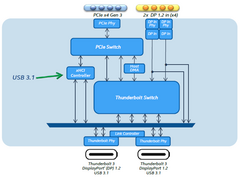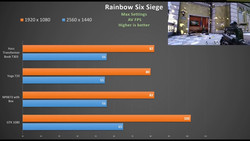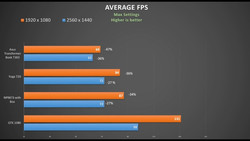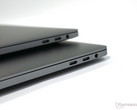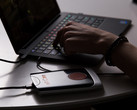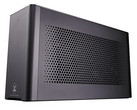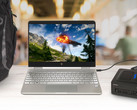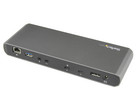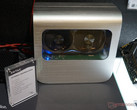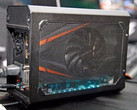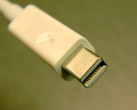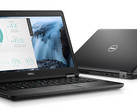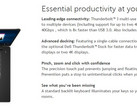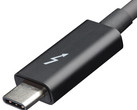Introduction
Thunderbolt 3 (TB3) is fast becoming the connection of choice in most PCs due to its ability to leverage the new USB 3.1 Type C-connector to provide 40 Gbps bandwidth over a PCIe bus to the CPU. The port has the capability to drive two 4K displays simultaneously, deliver up to 100W power for device charging, provide a 10Gb Ethernet connection, and act as a hub for connecting a host of USB and DisplayPort devices all at once — but its most attractive feature to many has always been the ability to connect an external GPU.
There was a minor kerfuffle when consumers learned that not all TB3 implementations were created equal, resulting in lots of unhappy XPS 13 and XPS 15 users. Intel gives OEMs the flexibility in allowing 2- or 4-lane PCIe connectivity via TB3. When used to connect an eGPU, a 2-lane connection results in roughly only 16Gbps of bandwidth rather than the 40Gbps that is advertised. It has been traditionally the opinion that 2-lane PCIe connectivity bottlenecks eGPUs due to the decreased bandwidth, but going by a comparative benchmark run by YouTuber Stephen Burgess of OwnorDisown, it seems that notebooks can not only do okay with an eGPU running over a 2-lane implementation, but it is even possible for them to outperform a 4-lane notebook with a faster CPU in a few cases. Let's have a look at OwnorDisown's benchmarks:
The Testbed
Stephen used the Aorus GTX 1080 gaming box that comes included with a custom NVIDIA GeForce GTX 1080 to evaluate its performance across three distinct notebook classes. The performance of the gaming box was compared to a Sager NP9873 notebook that already comes with the GTX 1080 onboard paired with a desktop-class Intel Core i7-7700K CPU overclocked at 4.7 GHz (baseline performance). The second notebook is the Lenovo Yoga 720 that is powered by the Intel Core i7-7700HQ CPU and an NVIDIA GeForce GTX 1050 GPU. The Yoga 720 comes with Thunderbolt 3, but its connection is wired to just 2 PCIe lanes. The final device is actually a tablet, the Asus Transformer Book T303UA, which comes with a 6th generation Intel Core i5-6200U CPU and integrated Intel HD Graphics 520. The Aorus gaming box was connected to an external display via DisplayPort and to the test device via the TB3 connector. All games were run at both 1080p and 1440p at max settings.
Game Benchmarks
Battlefield 1
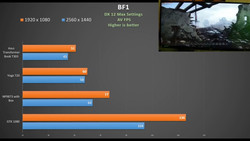
Battlefield 1 is a CPU-heavy game and the scores are reflective of the CPU power of each notebook. Without using the gaming box, the overclocked NP9873 posted baseline scores of 136 fps at 1080p and 104 fps at 1440p. Using the box, however, there was a 40% decrease in performance of the NP9873 matching scores posted by the Yoga 720, especially, at 1440p. The Transformer Book lagged behind the others as expected given its anemic CPU but posted decent frame rates that would otherwise have been impossible without the gaming box.
Doom
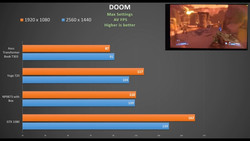
Doom performed well on all three notebooks when compared to the baseline scores without the gaming box, especially, at 1440p. The NP9873 took a beating of just 22% at 1080p and the Transformer Book came pretty close to the 100 fps mark at 1440p, impressive feat for a 6th gen CPU powered tablet. The most important take home message is that the Yoga 720 with its 2 PCIe lanes for TB3 is able to match the scores posted by the overclocked NP9873 at both resolutions.
Rainbow Six Siege
Rainbow Six is more GPU-dependent than CPU and the results testify this fact. All notebooks fared more or less comparably to the baseline at both resolutions and at max settings. It is good to see that the low power CPU on the Transformer Book is not an impediment to good frame rates. Therefore, games that are more GPU-dependent will fare better irrespective of the CPU when coupled to a capable eGPU.
Rise of the Tomb Raider
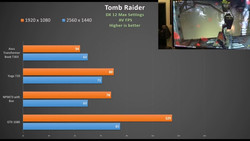
This was interesting; the Transformer Book matched the scores posted by the NP9873 at 1440p and is within comparable distance at 1080p! The Yoga 720 with it's half-bandwidth TB3 implementation and mobile CPU posted higher scores than the overclocked NP9873 with its desktop-class i7 and x4 PCIe configuration.
Final Scores
Averaging out the scores, we see that at 1440p, both the Yoga 720 and the NP9873 with the gaming box posted a 27% performance hit compared to the baseline score. Understandably, the Transformer Book had a 36% performance deficit. At 1080p, there was no noticeable difference between the Yoga 720 and the NP9873 with gaming box, despite the former having a 45W 7700HQ CPU. The presence of just 2 PCIe-lane TB3 connectivity on the Yoga 720 also did not seem to be a deterrent as it would conventionally seem so.
Conclusion
Laptops such as the Dell XPS 15 9560 were criticized for having just 2 PCIe lanes for TB3. The general understanding that 2-lane TB3 will have approximately half the peak bandwidth of a 4-lane port, while not false, is somewhat misleading. The number of lanes are not for the actual port itself, but for the number of PCIe lanes that lead to the CPU. Therefore, while all TB3 ports support 40 Gbps bandwidth, the number of PCIe lanes that ferry this data to the CPU determines how much total bandwidth can be utilized. Also, for the same reasons, a laptop advertised as having a 40 Gbps TB3 port does not necessarily mean that there are 4 PCIe lanes ferrying the data. One must remember that 40 Gbps transfer rates can be achieved by 2 PCIe lanes via 16 GBps PCIe data combined with 24 Gbps DisplayPort traffic (whether you'd call DisplayPort traffic as 'data' or not is a different issue altogether).
Although a 4-lane TB3 configuration is the preferred choice for eGPUs, going by OwnorDisown's results, those having notebooks with 2-lane TB3 connectors can still make a good eGPU investment so long as an external display is used. If you are thinking of buying an eGPU to complement your next laptop, we invite you to read our detailed analysis of our Razer Core benchmarks and reach your own conclusion regarding whether the performance drop is too much for the price.




